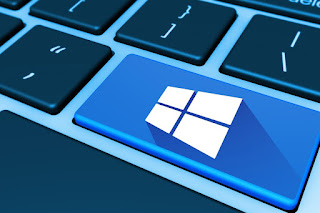Windows 8.1
Windows 8.1 is long outdated, but technically supported through 2023. If you need to download an ISO to reinstall the full version of the operating system, you can download one from here
If you are still using Microsoft Windows 8.1, we recommend you at least begin considering what OS you will use in the future. It’s mid-2021 and Win 8.1 will shuffle off the mortal coil in January 2023. You can still qualify for a free upgrade to Windows 10 if you own a valid Windows 8.1 license, despite the fact that Microsoft formally ended its upgrade program five years ago. Additionally, Windows 10 has the same system requirements as Windows 8.1, so if you can run the latter, you can also run the former.
Even though Windows 11 has been announced, upgrading to Windows 10 has several advantages. First, Windows 11 may not support your hardware if it’s old enough to still be running Windows 8 or Windows 8.1. Windows 10, on the other hand, was compatible with virtually everything Windows 8.1 would run on. Windows 10 will also be supported through 2025, which gives you an extra two full years of support before needing to figure out an alternative solution.
If you are somehow still stuck on Windows 8.0 and do not want to go to the hassle of a full OS swap, we recommend running Windows Update immediately and downloading all available patches for your system, including the Windows 8.1 update, which will likely be offered to you by default. If you want to download just the Windows 8.1 update files, you can do so here.
Original story below, from 2013:
Windows 8.1 has been released. If you’re using Windows 8, upgrading to Windows 8.1 is both easy and free. If you’re using another operating system (Windows 7, Windows XP, OS X), you can either buy a boxed version ($120 for normal, $200 for Windows 8.1 Pro), or opt for one of the free methods listed below. To download and install Windows 8.1 for free, follow the guide below.
How to install Windows 8.1 for free
Once you have the Windows 8.1 ISO on your hard drive, the installation process is painless. Before you begin, you should consider backing up your important files and documents, but it’s not really necessary. You should also ensure that you have plenty of free hard drive space (20GB+).
If you’re already running Windows 8 and you downloaded the RTM ISO from somewhere other than the Windows Store, you can install Windows 8.1 by mounting the downloaded ISO in Explorer by double-clicking it, and then running the installer. If you’re on Windows 7, XP, or (bless your soul) Vista, you’ll need to burn the ISO to a USB thumb drive or DVD, or mount the ISO using a third-party virtual drive tool, like Magic ISO.
If you already have Windows 8, and you waited for the official release date, installing Windows 8.1 is as simple as visiting the Windows Store and downloading the free update.
In both these cases, the upgrade process should be very smooth, with your apps and settings fully preserved. If you upgrade from Windows 8.1 Preview, however, you will lose your installed apps, unless you first run a cversion.ini removal utility.
Once you’ve installed Windows 8.1, you should check out our extensive collection of Windows 8.1 tips and tricks, and be sure to check our Windows 8.1 .




Comments